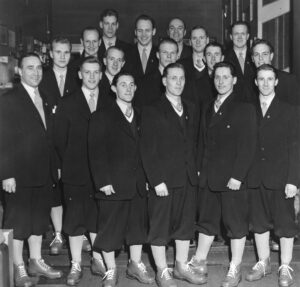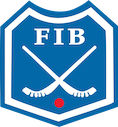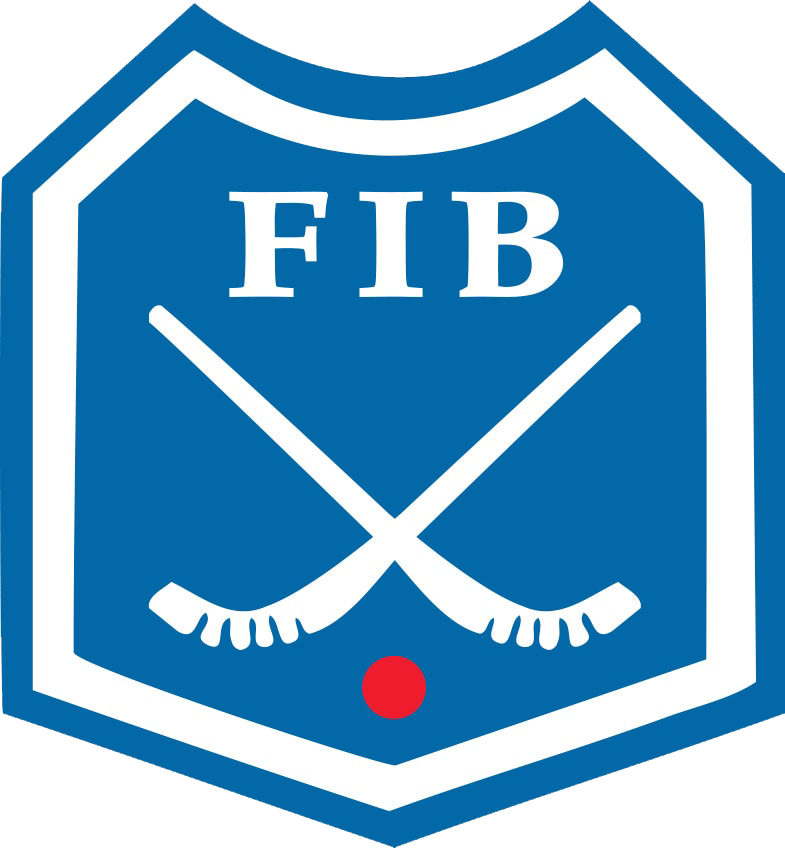THE BACKGROUND
The background for the Winter Games in Oslo 1952 was quite peculiar. It was not an expressed wish from the various Norwegian winter  sports federations to arrange these Games, but it was purely a political idea from the beginning and through to the final decision!
sports federations to arrange these Games, but it was purely a political idea from the beginning and through to the final decision!
The idea came up during tragic circumstances in a Nazi-concentration camp called Sachenhausen in Germany during World War II where several Norwegian politicians had been incarcerated because of their opposition to Nazi-Germany’s occupation of Norway. Amongst them were a future Prime Minister of Norway, a future Deputy Mayor of Oslo, a future Cabinet member, and an already known architect.
Right after the war ended in 1945 these people came back to Norway and almost immediately decided to try to get the Winter Olympics 1952 to Oslo and started to promote the idea in the political system. The 1948 Games was excluded for financial reasons so early after the war. In August 1946 Oslo’s politicians decided to apply to the IOC to get the Games in 1952. The application was supported by Mr. Thomas Fearnley, then a Norwegian Board Member in IOC. As the story goes, the political process and the decision were without any real debates, but perhaps the most unusual part of it was that the application to the IOC was sent without much interest having been shown by the Norwegian winter sports’ federations! And it was decided that if Oslo got the Games, the architect from the Nazi-concentration camp’s idea sessions should get the job of designing the various arenas. And so happened!
At the time the IOC required that a sport that wanted to participate in the Olympics had an international federation behind it. Bandy did not have that until the International Bandy Federation, IBF, (later changed to Federation of International Bandy, FIB) was established in 1955. However, an international bandy rules committee was put together in 1949 by Sweden, Finland and Norway. Bandy was a big sport in the Soviet Union, but they did not participate in international bandy until they arranged a four-nation tournament in Moscow 1954. An exception for this were a few bandy games in 1928 in the first Winter Spartakiade ever which took place in Oslo between socialist teams from Norway, Sweden and Soviet.
After Oslo was awarded the Games at the IOC Congress in Stockholm in 1947, the Organization for the 1952 Olympics was established under the chairmanship of Mr. Olaf Ditlev-Simonsen, who had replaced Mr. Fearnley as the Norwegian delegate to the IOC. Mr. Ditlev-Simonsen was amongst a lot of things, a former bandy player with several Norwegian championships and national team appearances in his CV. It is undoubtedly due to his efforts, possibly in good cooperation with the IOC’s Chairman Mr. Sigfrid Edstrøm from Sweden, that bandy was elected to be a Demonstration Sport in the 1952 Olympics, for the first and so far only time on senior level (later Youth Olympics 2016 Lillehammer/Gjøvik and Lausanne 2020).

The Opening Ceremony of the VI Olympic Winter Games at Bislett Stadium in Oslo Friday, February 15, 1952. Photo: NTB, VG, Aktuell.
The Games were opened on Friday, February 15, 1952, at the then famous speed-skating arena Bislett by Mr. Ditlev-Simonsen and HRH Princess Ragnhild, a substitute for her grandfather King Haakon VII and her father Crown Prince Olav who were in London for the funeral of King George VI.
The bandy demonstration games were to be played in three games between Norway, Sweden, and Finland. The Soviet Union, which had at the time participated in some sporting events abroad, had been invited to participate in the bandy demonstration games, but did not for administrative reasons. An interesting explanation has come from a Russian historian, Sergey Shapovalov:
– “Soviet athletes had been preparing for the Oslo Olympic Games because Stalin had made a political decision to firmly and clearly get out of sports isolation. The participation later in 1952 in the Summer Olympics in Helsinki confirms this. However, the Soviet sports officials forgot to apply for participation in the Oslo games in time. At that time, the Russians did not have any experience in protocol matters, but they took a lesson and did it in time for the Summer Games”.
Norway-Finland 2-3 in the first game on Wednesday February 20 at Dælenengen Arena in Oslo. In the middle of the day around 500 people attended, amongst them the IOC Vice-chairman Mr. Avery Brundage. After 13 minutes Norway had scored 2 goals, and it took the Finns 35 minutes to hit the goal’s net. However, they followed up with an equalizer three minutes later, and added a third goal in the second half to win 3-2. According to the newspapers the Norwegian team should have won this game, and the headline in the largest daily read: How long was Adam in Paradise? Pentti Hämäläinen scored all three goals for Finland, and Arne Johansen and Ole Martinsen netted for Norway.

In front from the left side: Arne Bakker, Stabæk, Leif Eriksen, Bestum, Gudmund Nordengen, Gjøvik, Hans Petter “Bosse” Halla, Bestum, David Eriksen, Drafn and Rolf “Rolle” Person, Stabæk. Back from the left side: Arne Johansen, Frigg, Martin Olsen, Lyn, Harald Aalerud, Stabæk, Harry Dahl, Bestum, Einar “Bror” Andersen, Drafn, Tore Frisholm, Frigg, Cato Helgerud, Drafn, Gunnar Fossum, Drafn and Ole Martinsen, Sagene. Photo: NBF.
Norway’s team
Goalie: Hans Petter «Bosse» Halla (Bestum), defense: Arne Bakker (Stabæk), Leif Eriksen (Bestum), Tore Frisholm (Frigg), David Eriksen (Drafn), Rolf Person (Stabæk), forwards: Arne Johansen (Frigg), Gunnar Fossum (Drafn), Cato Helgerud (Drafn), Einar «Bror» Andersen (Drafn), Ole Martinsen (Sagene). Substitutes: Goalie: Gudmund Nordengen (Gjøvik), defense: Harald Aalerud (Stabæk), Harry Dahl (Bestum) and Martin Olsen (Lyn).

In front from the left side: Equipment manager Pehr Lindholm (Helsingfors IFK), Kauko Korpela (Käpylän Urheiluveikot), Olof Stolpe (Vasa IFK), Yrjö Jussila (Warkaus P-35), Heikki Ollikainen (Oulun Palloseura), Kauko Tukiainen (Warkaus P-35). Middle from the left side: Arvo Raitavuo (Veiterä), Pentti Hämäläinen (Joensuun Mailapojat), Kullervo Muurinen (Ylä-Vuoksen Palloseura), Juhani Halme (Reipas), Herbert Lundström (Helsingfors IFK). Back from the left side: Sakari Salo (Sudet), Per-Erik Lindqvist (Akilles), Erik Åberg (Helsingfors IFK), Team leader Allan Lagerström (Helsingfors IFK), Pentti Immonen (Veiterä), Martti Nyyssönen (Warkaus P-35). Photo: With permission from Sport Museum of Finland.
Finland’s team
Goalie: Herbert Lundstrøm (IFK Helsingfors), defense: Juhani Halme (Reipas), Yrjö Jussila (WP 35), Arvo Raitavuo (Veiterä), Marti Nyyssönen (WP 35), Olof Stolpe (VIFK), forwards: Kauko Tukiainen (WP35), Heikki Ollikainen (OPS), Sakari Salo (Sudet), Pentti Immonen (Veiterä), Pentti Hämäläinen (JMP). Substitutes: Goalie: Kullervo Murinen (YVPS), Kauko Korpela (KUV) and Per-Erik Lindquist (Akilles) who replaced an injured Juhani Halme during the match.
Referee was O. Gyhlén from Sweden.

Norway vs. Sweden (2-1) at Dælenengen Stadium in Oslo Thursday, February 21, 1952. Photo: NTB, VG, Aktuell.
Norway-Sweden 2-1 already the day after in the same arena. After that game the headline in the biggest Norwegian daily read: «Norwegian bandy’s greatest day» as they defeated the more famous Swedes 2-1. Norway’s first win in history over Sweden. 3000 people were in the audience, and with the Swedish Prince Bertil in one of the VIP-chairs. Cato Helgerud scored for Norway already after 8 minutes on a corner stroke, the only goal in the first half, after very good play by the Norwegian defense, especially goalie “Bosse” Halla and centerback Tore Frisholm. The spectators, among them many Swedes, asked themselves after the first half whether the Norwegians could keep up the good play in the second half. They did! Martin Olsen, a great soccer player in the summer and famous from some of the actions he had participated in as part of the Norwegian resistance movement during World War II, had replaced Gunnar Fossum after the game against Finland. He made a spectacular lob with the ball above the Swedish defense towards Einar «Bror» Andersen who netted. 2-0 to Norway until Ernst Håård reduced for Sweden some minutes before the end of the game. Norway’s first win over Sweden since they started to match each other 25 years earlier. Norway listed the same team that played Finland, except that Martin Olsen as said had replaced Gunnar Fossum.
Sweden’s team
Goalie: Yngve «Yppe» Palmquist (Bollnäs), defense: Orvar Bergmark (Örebro), Olle Lindgren (AIK), Karl-Erik «Klicken» Sjøberg (Bollnäs), Herbert Swartswe (Edsbyn), Sven Olof Landar (Edsbyn), forwards: Martin «Lillen» Johansson (Bollnäs), Olle Sääw (Örebro), Sven-Erik Broberg (Västanfors), Ernst Håård (Forsbacka), Agard Magnusson (Sandviken). Substitutes: Goalie: Rune Eriksson (Karlstad-Gøta), Inge Cahlman (Skutskär), Henry Ohlsson, Västerås, Tore Olsson (Karlstad-Gøta).
Referee was Johan Alho from Finland.
Sweden-Finland 4-0 played on Saturday, February 23, the last and decisive game of the Olympic Demonstration Bandy Tournament in the Olympic Main Arena, Bislett Stadium in the city center, with around 1500 people in the stands. To win the tournament, the Swedes had to beat the Finns with at least two goals. The Swedes had made a few changes among the 11 players on the ice.
Inge Cahlman, Henry Ohlsson and Tore Olsson replaced Sven Olof Landar, Sven-Erik Broberg and Agard Magnusson. Compared with the team against Norway, the Finns started with Lindquist instead of the injured Halme, and Erik Åberg replaced Ollikainen. Åberg got, however, injured during the game and Ollikainen replaced him. Although the first half of the match was pretty even, Sweden scored three goals, Finland none. If the first half had been pretty even, the second was not, but the Swedes scored only one goal to win the game 4-0 and thus the olympic tournament. The Swedish players Ernst Håård and Olle Sääw scored two goals each.
Referee was Thorvald Lindstad from Norway.
Final standings Olympic Bandy Games 1952
Sweden 2p – 5-2
Norway 2p – 4-4
Finland 2p – 3-6
The bandy demonstration games got relatively good coverage in the newspapers, especially in the Oslo papers, although the competition for the newspapers’ space and the journalists’ time were of course tremendous from the ordinary Olympic events. Anyway, the biggest Norwegian daily, Aftenposten, nominated an All Star Team after the games as follows:
All Star Team from goalie to the left wing:
Yngve «Yppe» Palmquist, Sweden, Orvar Bergmark, Sweden, Herbert Swartswe, Sweden, Olof Stolpe, Finland, Tore Frisholm, Norway, Arne Bakker, Norway, Erik Åberg, Finland, Olle Sääw, Sweden. Martin Johansson, Sweden, Martin Olsen, Norway and Pentti Hämäläinen, Finland.
It is perhaps worth noting that some of these players were not exactly nominated in the place they played on their teams, although no one is placed in a forward position if he played defense, or vice versa.
Bandy and football players
Also worth noting is the fact that of the above players, Orvar Bergmark, Olof Stolpe, Arne Bakker and Martin Olsen, all were excellent football players and played on their respective National Teams. Orvar Bergmark even became a professional football player in Italy and played in the Final Game between Sweden and Brasil in the World Football Championship in Sweden in 1958, where Sweden lost but “won” silver medals. Three years later, he played for Sweden against Soviet in the Bandy World Championship Final in Oslo, but lost again. And if these achievements alone were not enough, Orvar Bergmark got nominated in both tournament’s All Star Teams! Only one other person in the world has played a world championship final game in two different sports, and again in football and bandy: The Swede Sigvard Parling, football in 1958 and bandy in 1961, on the teams with Bergmark.
The newspapers at the time covered the various events broadly, with results and glimpses from the arenas and around, and interviews with people in the streets and in the stands. It turned out that not only Norwegians, Swedes and Finns had been to the Olympic bandy games, but that tourists from far away countries like Japan and the United States had also been there. And one Hungarian, emigrated to Britain, claimed that he even had played bandy for Hungary, including the last bandy match for Hungary in 1914 before the Great War started.
Article written by Tor Audun Sørensen, Norway
Translated into English by Johnny Johnsen, Norway



